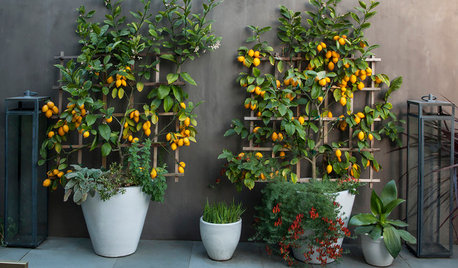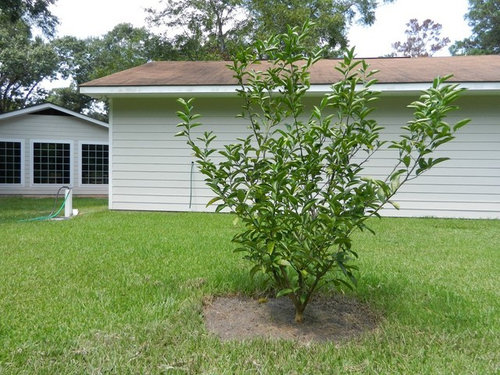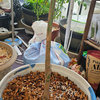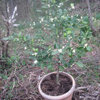Fruitless Lime
johnorange
10 years ago
Related Stories

TREES10 Top Trees to Grow in Containers
These container-friendly trees make great specimens for pots on the patio or marking an entrance
Full StoryI forget what variety of lime this tree is but it hasn't bloomed or fruited since I planted it maybe five years ago. It puts on one or two decent growth shoots a year and the leaves look pretty healthy. I would like to try to aerate the soil and maybe even dig it up and plant it on a mound. I have poorly drained clay soil, wet winters, and hot, muggy summers. Any comments are welcome but my main question is does this tree have a tap root that would keep me from looseening the soil around the tree with a fork and then raising the tree without fully digging it up? I have a small kumquat that is without a doubt planted too deep and I would like to try pushing it up also...but I don't think this will work if they have tap roots that would be too deep to loosen with the fork. Thanks for your thoughts!




johnorangeOriginal Author
uncle molewacker z9b Danville CA (E.SF Bay)
Related Professionals
Carlisle Landscape Architects & Landscape Designers · Franconia Landscape Architects & Landscape Designers · Wareham Landscape Architects & Landscape Designers · San Juan Landscape Architects & Landscape Designers · Aurora Landscape Contractors · Chattanooga Landscape Contractors · East Patchogue Landscape Contractors · Fairview Landscape Contractors · Farmington Landscape Contractors · Hicksville Landscape Contractors · Longmont Landscape Contractors · Mission Bend Landscape Contractors · Tuscaloosa Landscape Contractors · Wickliffe Landscape Contractors · Hawaiian Gardens Landscape ContractorsjohnorangeOriginal Author
johnorangeOriginal Author
johnmerr
johnorangeOriginal Author
johnorangeOriginal Author
aacor11
hoosierquilt USDA 10A Sunset 23 Vista CA